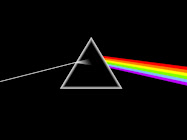Hey Marvin, have you been paying attention to this?
This page is full of dates and explanations. I got this wonderful image there too (thank you)
Arriving at the Saturn System in 2004 this mission has given us some of the best high resolution images of the Planet, the Ring System and the many moons orbiting this gas giant. When August of 2009 came and the probe was still in perfect operating condition, it would seem silly to just scrap the mission with the Equinox coming on. This event occurs just once every 15 Earth years. So dubbed "Cassini- Hugens" this mission is now on part 2 the Cassini Equinox mission and continued to bring facts, figures and information.
Brief recap of the mission so far:
Hugens, the lander, landed on the large moon Titan, new moons have been discovered, Enceladus found to have giant geysers, leading scientists to think this icey moon may have liquid water beneath the surface, found the moons cast giant shadows on the ring plane (this is surmised to only occur during Equinox); the list goes on and on.
Well you say what does this actually do for me? Well, not a darn thing, but it does fill the curious mind with more knowledge, facts and possibly a new category in Trivial Pursuit. The way I am seeing this, it keeps a co-op between nations here on Earth, can only mean an advance in technology, and will provide plenty of the "did you know" questions for future generations. Keeps the scientists busy with peaceful studies and well its just real interesting to learn about other worlds.
Questions to be answered:
Why is it the Planets beyond the asteroid belt all have rings? are gas worlds (except for the moons), and what about Pluto: the only terrestrial body to be orbiting the sun beyond the belt of asteroids.
Might this also bring some attention to the asteroid belt?
And just like a space mission, I have raised way more questions than answers.... you have to like me for that :)







No comments:
Post a Comment